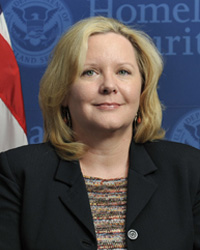
CIO Council wants agencies to consider: ‘The best code ever written is the code that is never written’
The Federal Chief Information Officer’s Council released a best practices guide to help agencies understand and use shared developer platforms and APIs to connect...
Federal agency spending on cloud computing is expected to take a dip in fiscal 2017, but rebound heading into 2018 and increase through 2021.
Shawn McCarthy, research director for IDC Government Insights, said public cloud services will account for about half of the $2.15 billion spending in 2017. By 2021, agency spending on public cloud is projected to increase to $1.9 billion out of the $3.3 billion.
These figures are great for companies such as Amazon, Microsoft, Google, IBM and a host of other cloud infrastructure and platform-as-a-service providers. But the real opportunities lie in how federal agencies can turn their investments in cloud into a digital transformation.
“You could make the argument that everything is going toward hybrid as more and more solutions are moved to the cloud, the systems become more interconnected,” McCarthy said in an interview with Federal News Radio. “As this happens, the application programming interfaces (APIs), shared data bases and other similar technologies become more important in how you build a system and they are becoming increasingly interconnected.”
McCarthy’s point about the ever-growing interconnected nature of these cloud systems only reinforces the Federal CIO Council’s recent best practices guide around shared developer platforms and APIs.
“This document in many ways is the beginning and does a good way of addressing this is the direction the government would like to go in,” said Greg Godbout, a former executive director of the 18F digital services organization in the General Services Administration. “The best code ever written is the code that is never written. Agencies are having these internal conversations, do you ever write something twice, or do you build into a platform the ability to use things twice. Great developers reuse code. Also as part of the spirit of this is it addresses the need for the modular aspect of systems and software development. You can pull in commoditized commercial applications and use APIs. That is a powerful way to rapidly build systems but that is not historically how government builds systems.”
Godbout, who now is CEO and co-founder of cBrain North America, said the CIO Council’s guide is part of the effort to move agencies off of legacy systems more quickly.
The council outlines three key findings in the document:
- Developer platforms and services are key mission enablers in the public and private sectors. The shared service model already deployed in the federal government provides an approach to governance, deployment, and funding for developer platforms and services.
- There is a wide range of immediate opportunities for the federal government to support a growing ecosystem and marketplace of developer platforms and services (e.g. identity, notifications, data sharing) based on an analysis of needs and on experiences from the private and public sectors.
- There are policy reform opportunities that can accelerate developer platforms and services, as well as certain administrative shared services, including streamlining the authority to operate (ATO) process, clarifying responsibilities in shared environments, modernizing Trusted Internet Connections (TIC) policy, exploring how the Privacy Act applies in these contexts, and further supporting new funding models.
The council details federal and international examples of where organizations took advantage of APIs and shared developer platforms to launch a citizen service more quickly. It also highlighted several ongoing federal projects, including Login.gov, Cloud.gov and a new one called the Federal Data Service Hub, which “seeks to provide privacy-protected verification services for certain program eligibility and enrollment decisions,” that are shared platforms that agencies could take advantage of today.
“The federal government is behind in adopting this modular approach. Indeed, the lack of developer platforms and services available to departments and agencies is a problem that will only become more acute with each passing year as the need for APIs supporting the delivery of web and mobile applications continues to grow in importance,” the council stated. “There is good news. This report has shown that the shared services model previously applied to administrative and other back-office functions can provide a foundational approach for sharing developer platforms and services.”
Shawn Kingsberry, the former CIO of the Recovery Accountability and Transparency Board, builds on what Godbout said about IT modernization. Kingsberry, who now is the global lead for digital government at Unisys, said the document doesn’t just lay the path toward modernization but digitalization of services.
“What I’m seeing with customers around the world is they are going to the services and micro-services approach to create innovation and new applications and mobile tools to drive that down to customers,” Kingsberry said. “This document isn’t saying do this or how, but it’s inferred because it’s laid out and connected back to other services. If I were a federal CIO today, I would use this as ammunition to increase the velocity of transformation. It comes back to strategy and this can be used to help further my mission.”
Godbout added the CIO Council also recognizes that federal policy also needs to change if this type of shared service is going to have a more dramatic impact.
“How do you encourage an agency to celebrate the shared service? You have to come with some expectation of support and the policies need to encourage that celebration and expectation,” he said. “Many agencies are set up to deliver on that kind of service. And because the legacy systems are already so problematic, they are drivers enough that you have to do something with them. You can’t make the mistake of rewriting the same system in modern code so now you can buy components and use APIs to integrate them. This idea is to think modularly and think about what steps you can do to code as little as possible to make it seamless for the users.”
Kingsberry and Godbout both recommended agencies pilot small efforts on these and other shared platforms and build off those lessons learned.
Kingsberry said by moving to shared developer platforms agencies can focus on the business or mission side to drive the technology. He said agencies can lay other considerations, whether legal or national security or others, on top of the initiative to decide the best direction instead of worrying about having to build the technology too.
The council is encouraging agencies to aggressively move to shared developer platforms to “improve time to market, enhance security, increase performance and reduce costs.”
Return to the Reporter’s Notebook
Copyright © 2025 Federal News Network. All rights reserved. This website is not intended for users located within the European Economic Area.
Jason Miller is executive editor of Federal News Network and directs news coverage on the people, policy and programs of the federal government.
Follow @jmillerWFED





